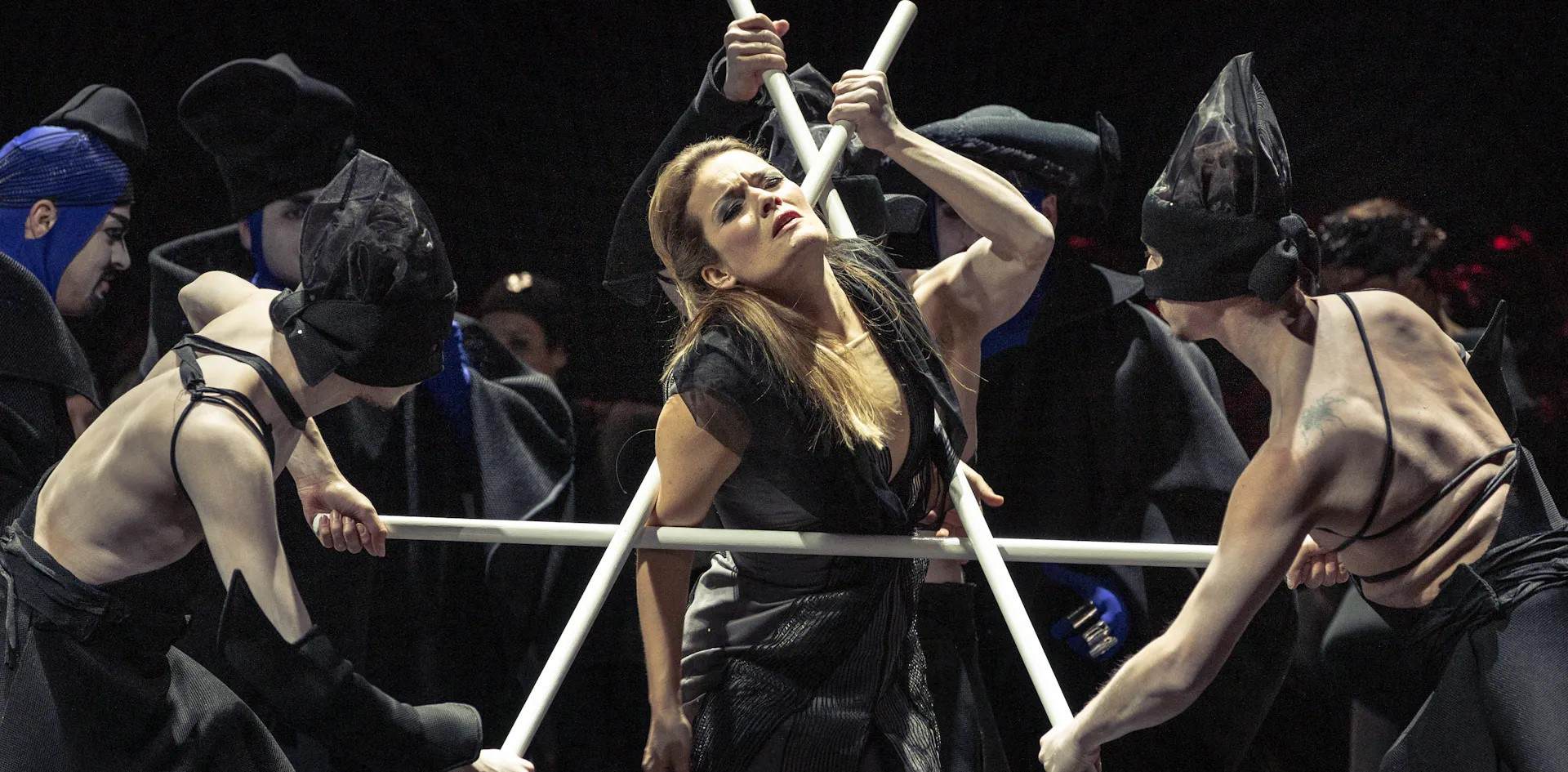Turandot
Mo | Tu | We | Th | Fr | Sa | Su |
National Theatre Chorus
National Theatre Orchestra
National Theatre Opera Ballet
Kühn Choir of Prague
Prague Philharmonic Children's Choir
Giacomo Puccini’s final opera, Turandot, may be deemed to be the “last of the Mohicans” of the Golden Age of Italian Romantic opera. The greatest of Verdi’s heirs, the composer, however, did not get bogged down in this tradition, but went on to boldly develop and enrich it with the flavours of the new artistic styles that emerged in the late 19th and the early 20th centuries. Consequently, his Turandot, written between and 1921 and 1924, does not feature many Romantic traits.
Puccini based the opera on the eponymous commedia dell’arte play by Carlo Gozzi, an author much admired by the early 20th-century avant-garde artists. The subject hails from Persia or Mongolia, whose cultures were mainly marvelled at by votaries of the decorative style, while the libretto’s story is set in medieval Beijing and foregrounds fairy-tale, or better said mythological, elements, favoured by the Symbolists. The theme of passionate love, essential for Romantic opera, is veiled in mysterious motifs of ice, fire, moon, while an erotic flame enigmatically blazes along with intense, unrelenting hatred, which we would rather expect to be present in works inspired by decadence or psychoanalysis.
Yet all that which, notwithstanding its modernism, gives Turandot the Romantic opera hallmark is Puccini’s musical idiom, which too encompasses plenty of “eccentric” facets – ranging from Oriental paraphrases, through a brutal orchestral sound, dissonant harmonies to wildly complex chorus and ensemble scenes – but what prevails is Puccini’s masterful melodic invention in the spirit of the legacy of his great Italian opera predecessors, yet utterly original – by and large, Puccinian.
Program and cast
Approximate running time: 2 hours 45 minutes, 2 intermission (20 minutes) minutes
Language: In Italian, surtitles in Czech, English
Conductor - Jaroslav Kyzlink
Turandot - Maida Hundeling
Timur - František Zahradníček
Kalaf - Michal Lehotský
Liu - Yukiko Kinjo
Ping - Jiří Hájek
Pang - Jaroslav Březina
Pong - Martin Šrejma
Mandarin - Roman Vocel
Altoum - Jan Vacík
Prince of Persia - Martin Dvořák
Creative team
Stage direction and set design - Zuzana Gilhuus
Costumes - Boris Hanečka
Choreography - Martin Dvořák
Light design - Martin Bronec
Chorus master - Pavel Vaněk
Dramaturgy - Ondřej Hučín
Prague National Theatre
The National Theatre today
The historical building of the National Theatre, constructed in 1883, is generally considered the prime stage in the CzechRepublic. It is the flagship of the National Theatre institution, today amounting to five buildings and encompassing four companies. You can see there Opera, Drama and Ballet performances.
Idea of building a stately theatre for the Czech nation
The National Theatre is the embodiment of the will of the Czech nation for a national identity and independence. Collections of money among the broad mass of the people facilitated its construction and hence the ceremonial laying of its foundation stone on 16 May 1868 was tantamount a nationwide political manifestation.
The idea of building a stately edifice to serve as a theatre was first mooted in the autumn of 1844 at meetings of patriots in Prague. It began to materialise through a request for “the privilege of constructing, furnishing, maintaining and managing” an independent Czech theatre, which was submitted to the Provincial Committee of the Czech Assembly by František Palacký on 29 January 1845. The privilege was granted in April 1845. Yet it was not until six years later – in April 1851 – that the Society for the Establishment of a Czech National Theatre in Prague (founded in the meantime) made its first public appeal to start collections. A year later the proceeds of the first collections allowed for the purchase of land belonging to a former salt works with the area of less than 28 acres, which predetermined the magnificent location of the theatre on the bank of the river Vltava facing the panorama of Prague Castle, yet at the same time the cramped area and trapezoidal shape posed challenging problems for the building’s designers.
By car
To the centre (OldTown), approach on Masarykovo nábřeží (Masaryk embankment) in the direction from the Dancing House, at the crossroads in front of the National Theatre turn right to Divadelní street and then right again to Ostrovní street to the National Theatre car park. Parking costs 50 CZK/h.
By tram
By daytime trams Nos. 6, 9, 18 and 22 and night trams Nos. 53, 57, 58, 59 to the stop “Národní divadlo” – in front of the NT historical building; by daytime tram No. 17 to the stop “Národní divadlo”.
By metro
To the station “Můstek”, line B (yellow), and then by foot on Národní street; or to the station “Karlovo náměstí” and then two stops by tram No. 6, 18 or 22 to the stop “Národní divadlo”. To the station “Staroměstská”, line A (green), and then two stops by tram No. 17 to the stop “Národní divadlo”.

 EN
EN DE
DE IT
IT FR
FR ES
ES RU
RU JP
JP RO
RO
 Seating plan
Seating plan 